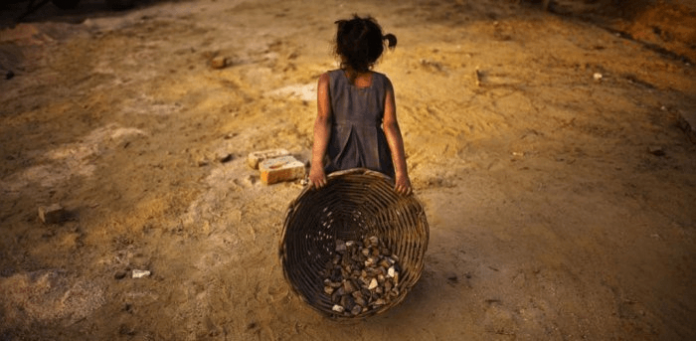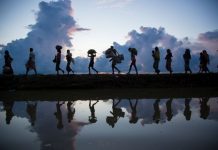This article is written by Kanya Saluja, from Institute of Law, Nirma University. The article talks about the impact of COVID-19 on child labor and Bal Shramik Vidya Yojna that is launched on ‘World Day against Child Labor’.
Table of Contents
Introduction
COVID-19 has divided the world into an emergency of unprecedented degree and scale. Without a doubt, re-establishing worldwide wellbeing remains the first need, yet the exacting estimates required are coming about in gigantic financial and social stuns. As lockdown, isolate, physical separating and other detachment measures to smother transmission proceeds, the worldwide economy has dove into a downturn. The destructive impacts of this pandemic won’t be dispersed similarly. They are relied upon to be most harming in the least fortunate nations and the least fortunate neighborhoods, and for those in as of now hindered or defenseless circumstances, for example, children in child labor and survivors of constrained work, what’s more, human dealing, especially women and girls. These helpless gatherings are increasingly influenced by pay stubs because of the absence of access to social assurance, counting medical coverage, and joblessness benefits.
COVID-19 and child labour
The underlying drivers of child work – including poverty, restricted access to tolerable work open doors for those of lawful working age, social underestimation, segregation, the absence of all-inclusive quality training, the predominance of the casual economy and powerless social exchange – are prone to be exacerbated. The financial and social emergency will hit children especially hard. An expected 42-66 million children could fall into extraordinary destitution as an aftereffect of the emergency this year, adding to the evaluated 386 million children as of now in outrageous destitution in 2019.
- The gigantic global disturbance to training brought about by constrainment measures and the absence of separation learning arrangements in numerous nations could drive child work numbers up.
- Households may depend on child work in request to adapt to work misfortune and wellbeing stuns related to COVID-19, specifically on the off chance that they are not in the instruction framework.
- Children who are from underestimated minority gatherings, incapacitated, road associated and destitute, or from single or child-headed family units, vagrants, outcasts, inside uprooted people, or from struggle or fiasco influenced regions are progressively defenseless against child work and at specific hazard in the current emergency.
- Children, specifically young ladies, notwithstanding the danger of child work, maybe troubled by expanded local errands and mindful duties.
- Vulnerable people and families who have lost their positions in the casual economy, in pressing need of assets for family endurance to be that as it may, with barely any reserve funds and constrained access to social security or different types of State support, are probably going to be more danger of falling prey to loan specialists giving credit on terms comprising obligation servitude.
- Helpless laborers are bound to get deceived and caught in constrained work. With additional laborers prone to contract obligations to endure, the danger of expanding obligation subjugation is especially significant.
- Criminal systems may effectively utilize this global emergency to abuse vulnerabilities to further confine the opportunity of casualties and increment the money related benefit that constrained work and human dealing produces.
- Restrictions on development may move types of abuse, ladies and children for instance might be industrially explicitly abused by their abusers on the web or inside private homes.
- Stricter controls at fringes may increment the danger of human dealing. Truth be told, casualties with documentation reallocated may be at danger of misuse, detainment, and re-exploitation from security entertainers/cops upholding isolates and overseeing checkpoints.
- Victims who have had their documentation evacuated by the exploiters may experience extra boundaries in getting to COVID-19 related medicinal services and different administrations.
Impact of COVID-19 on child labor
Overall, 152 million children are in child work; most of them, 108 million, work in agribusiness. The agrarian area incorporates fishing, ranger service, domesticated animal grouping, and aquaculture in both means and business cultivating. By what method will the COVID-19 effect endeavor to end child work in the area, following Sustainable Development Goals (SDG) Target 8.7 and International Labour Organisation (ILO) shows?
We see COVID-19 affecting child work in three ways: (1) expanding the inclusion of children in work; (2) expanding the danger of association or backslide for those removed from child work; (3) expanding working neediness among youth (15-17 years) in respectable work.
Expanding work support of children
Notwithstanding the danger to general wellbeing, the COVID-19 is causing a financial and social disturbance which undermines the drawn-out employment and prosperity of a huge number of ranchers, casual rustic food showcase brokers, merchants and their children. In numerous nations in the Global South, the infection-initiated limitations to development, and social occasions are occurring during the gathering and promoting time. In most cases, governments have not had the opportunity to set up measures to guarantee that promotion can happen, in particular propose a monetary bailout bundle for them. The occasional idea of smallholder creation and perishability of most horticultural items fuels the circumstance, as there is a little league outline in which families can sell and get the main part of their yearly pay.
We see financial trouble for smallholder ranchers expanding with every day of coronavirus-prompted limitations, making circumstances that may prompt child work. Moreover, as grown-ups face a higher danger of coronavirus contamination than children, children may likewise wind up accepting more noteworthy obligations for family endurance.
Expanded investment of children in child work
Governments around the globe have closed down instructive establishments with an end goal to stem the spread of the COVID-19 pandemic. UNESCO evaluates that these terminations are affecting over 89% of the world’s understudy populace in 188 nations. While vital, these measures can disproportionality affect children in farming networks in two different ways.
Initially, experience demonstrates that expanding access to training decreases child work. In any case, since children in provincial zones are presently at home constantly and not learning, they are probably going to be engaged with child work longer than if they were going to class. Likewise, children who had been expelled from child work are at elevated danger of backsliding. Second, without access to radio, web, or power, children in rustic networks can’t proceed with their training through remote learning like their urban partners. In this way, the COVID-19 will likewise build a training imbalance.
Expanding working destitution among legitimately working children
The fall in financial movement because of the isolate measures will excessively affect legitimate working adolescents (15-17 years) in horticulture since they are as of now near or underneath the neediness line, are moderately unpractised, have low investment funds and are engaged with low-talented employments. While there might be expanded interest for laborers in the rural segment, compensation is probably going to be stifled because of the high flexibility of low-gifted specialists.
COVID-19 and child labour: a time of crisis, a time to act
The report named “COVID-19 and Child Labour: A Time of Crisis, A Time to Act” has been discharged together by ILO and UNICEF. It examines the effect of COVID-19 pandemic on child work. Features of the report:
- The report expresses that the COVID-19 emergency could prompt the primary ascent in child work following 20 years of progress.
- A large number of more children could be driven into child work because of the COVID-19 emergency because of ascending in destitution.
- Because of brief school terminations, family units may search for better approaches to allot children’s time, prompting child work.
- Because of misfortunes in family salary, children’s commitment monetarily can heighten.
- Those children who are as of now working may do as such for longer hours or under compounding conditions.
- Diminishing working capital from misfortunes in settlements and business disappointments will keep decreasing interest for laborers, lower compensation, and wipe out employment.
- The report demonstrates that the number of individuals in extraordinary neediness could hop from 40 million to 60 million this year alone when contrasted with before the emergency.
- Destitution brings about child work as families utilize each accessible way to endure. The report expresses that 1 rate point ascends in destitution results into at any rate a 0.7 rate point increment in child work.
Thus, the examination says, “The pandemic has expanded monetary weakness, significantly upset graceful chains and stopped assembling. Fixing credit is compelling money related markets in numerous nations. Open spending plans are stressful to keep up with. When these and different components bring about misfortunes in family unit pay, desires that children contribute monetarily can increase. More children could be constrained into exploitative and risky occupations. Those previously working may do as such for longer hours or under compounding conditions.”
Featuring how this would lopsidedly affect the young lady child, the report says, “Sexual orientation imbalances may develop increasingly intense inside families, with young ladies expected to play out extra family unit errands and farming work. Transitory school terminations may fuel these inclinations, as family units search for better approaches to apportion children’s time.”
The report clarifies the connection between financial choppiness and child work saying, “With neediness comes child work as family units utilize each accessible way to endure. Possibilities change by nation, however causal assessments of versatility are for the most part above 0.7. As such, a 1 rate point ascend in neediness prompts, at any rate, a 0.7 rate point increment in child work.”
Cautioning about the chance of children being caught up in the casual area, the report says, “As is very much archived, child work is pervasive essentially in the casual economy, where children can undoubtedly step in as incompetent workers. Dangers to children’s privileges from a broadened casual area ought to in this manner not be belittled. More prominent casual business combined with financial difficulty could push numerous children out of school and into the work advertised.”
The report likewise features the helplessness of the girl child in such a circumstance saying, “Young ladies are especially powerless against abuse in farming, casual work, and domestic work, and face more serious dangers of sexual and sex-based brutality”. However, another gigantic emergency is the decreased access to training in wake of lockdowns over the world. The report says, “Most governments around the globe have incidentally shut instructive organizations to decrease the spread of COVID-19. School terminations have influenced more than 90 percent of all-out enlisted students or about 1.6 billion understudies. Numerous schools have moved online with separation learning, however, almost a large portion of the world has no entrance to the Internet, leaving numerous understudies much further behind.” It additionally says, “While aftermath from tutoring interruption might be constrained for most children, this may not be valid for those in helpless families and regions most seriously hit by COVID-19. In any event, when classes restart, a few guardians may not, at this point have the option to stand to send their children to class.”
Bal Shramik Vidya Yojana
Uttar Pradesh Chief Minister Yogi Adityanath on 11th June 2020 propelled Bal Shramik Vidya Yojana through video conferencing, under which the children of the laborers would be given money related help with the goal that they can begin their training just to keep up a sound life. “Today we have propelled another plan Bal Shramik Vidya Yojana’ for each one of those children of 8-18 years who ought to be in school yet need to do child work for the support of their families because of family conditions,” said CM Yogi while tending to the occasion on the ‘World Day against Child Labour’ which is seen on June 12.
“In the main stage, this plan will be actualized in 57 regions, where the most extreme number of children filling in as work have been recorded. Most of the children will be profited by this plan. A kid child will get Rs 1,000 every month and a girl child will get Rs 1,200,” included the Uttar Pradesh CM. “Children concentrating in eighth, ninth, and tenth grades under Bal Shramik Vidya Yojana will be given Rs 6000 every year. They will be likewise be given extra help whenever required,” he said.
Strikingly, the plan was to be propelled in March-end however because of the spread of coronavirus, and the ensuing lockdowns it was postponed and as the circumstance has improved the state government chose to dispatch it on Child Labor Prohibition Day (ANI).
Conclusion
The coronavirus keeps on spreading over the world after a trajectory that is hard to foresee. The wellbeing, humanitarian and financial strategies embraced by nations will decide the speed and quality of the recuperation. Without long haul structural changes, the profound established imbalances uncovered by the emergency will only strengthen. Just as handling the quick impacts of the emergency, the worldwide community presently has an exceptional occasion to embrace strategies pointed toward accomplishing social equity and a human focused fate of work.
Statistics show that child labor in India is probably going to expand post-pandemic. In a gathering with the work ministry, the overseer of ILO Dagmar Walter focused on that India needs to give essential government managed retirement that ensures children’s insurance. Work serving Santosh Gangwar concurred that there is a chance of more children participating in child work because of the loss of occupations during the pandemic.
Poverty is the underlying driver of child work, which, in spite of being a need for a progression of Indian governments, is yet to be destroyed. States and regions that utilize high child labor should particularly be observed in the post-pandemic time. The usage of different government managed retirement plans should be ventured up and debasement in their rollout managed solidly to guarantee pay/apportions for family units with the goal that children won’t be compelled to work. Most importantly, it is fundamental to recall that child work prompts lack of education and strengthens poverty and ought to be treated as an essential human rights issue.
References
- https://data.unicef.org/resources/covid-19-and-child-labour-a-time-of-crisis-a-time-to-act/
- https://www.unicef.org/reports/covid-19-and-child-labour-2020
- https://www.unicef.org/media/70261/file/COVID-19-and-Child-labour-2020.pdf
LawSikho has created a telegram group for exchanging legal knowledge, referrals and various opportunities. You can click on this link and join:
 Serato DJ Crack 2025Serato DJ PRO Crack
Serato DJ Crack 2025Serato DJ PRO Crack











 Allow notifications
Allow notifications



